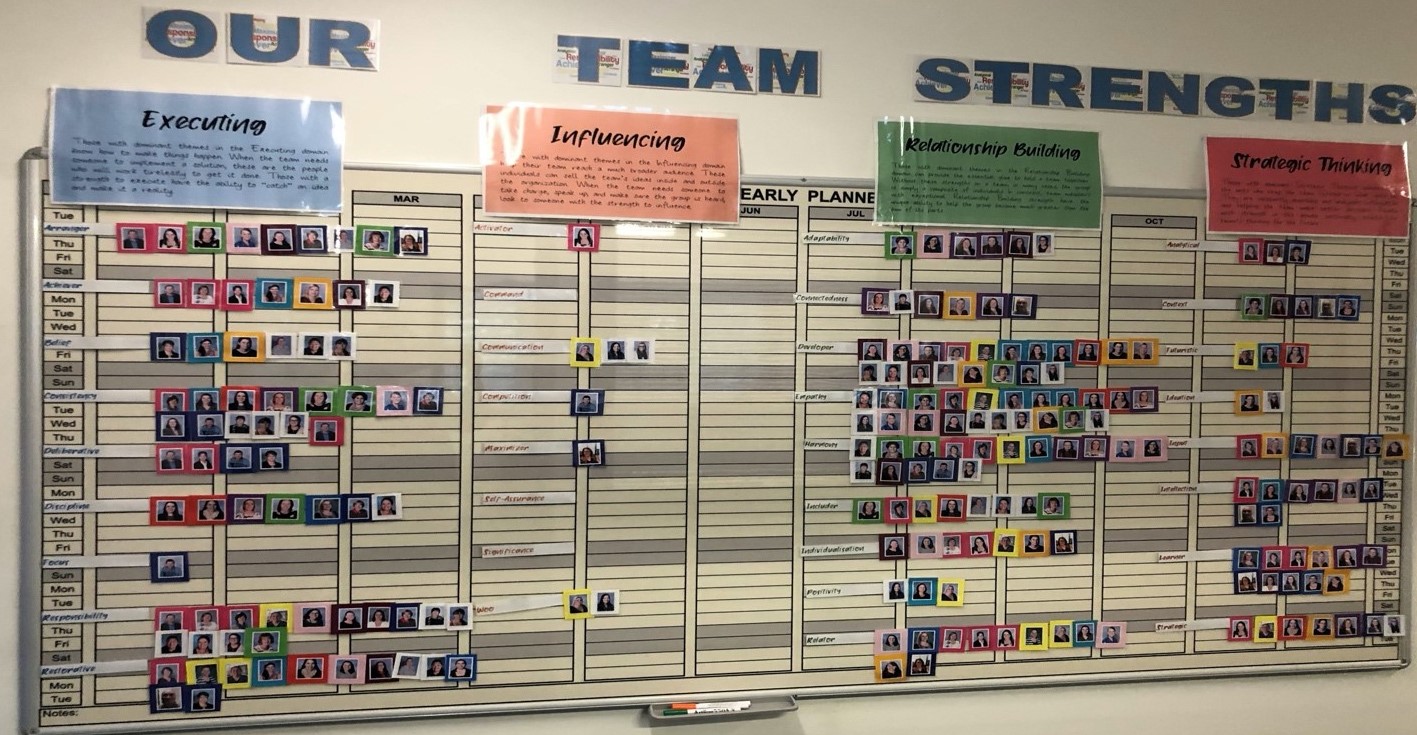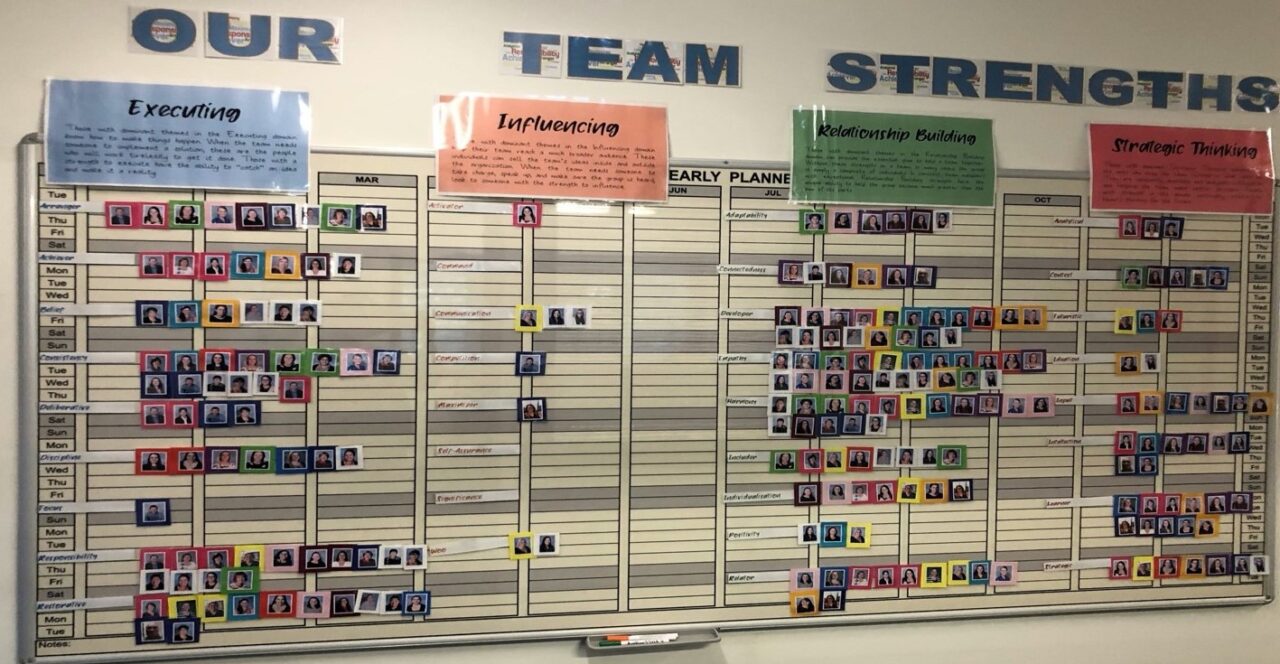One of my favourite leadership development activities is to guide the leadership team (or all of the staff) to unpack and understand their strengths.
Strengths based leadership focuses on identifying, understanding and utilising the natural strengths or talents that you bring to the team.
I find this to be especially beneficial for school leadership teams because as educators we spend a lot of our time identifying and then trying to address problems. We are almost wired to be negative. We constantly look for students that are having problems in their learning or issues with behaviour management, so that we can put in place a strategy to ‘fix’ them.
From the cradle to the grave, we devote more time to our shortcomings than our strength
Each person has greater potential for success in specific areas and the key to human development is building on who you already are
Strengths are defined as a pre-existing capacity for a particular way of behaving, thinking or feeling that is authentic and energising to the user and enables optimal functioning, development and performance.
According to management guru Peter Drucker, “Most people think they know what they are good at. They are usually wrong. And yet a person can perform only on strength.”
During the session I debrief staff utilising the Strengths Finder instrument from the Gallup group. Each member of the leadership team has completed the instrument online to identify their 5 greatest strengths from the bank of 34. One of the things that fascinates me is that even though a number of people in the leadership team may have strengths in common with their colleagues, the strengths present slightly differently. The reports are NOT like a horoscope where all Sagittarians read the same prognosis. Whilst some members of the leadership team may have “Learner” in their skill set (always a good thing in a school leadership team!), how that strength presents for each person will be different, depending on what their other strengths are.
The 34 different strengths also present under 4 distinct domains – Executing, Influencing, Relationship Building and Strategic Thinking. Whilst it isn’t necessary (and very unlikely) for each individual to cover all four domains, it is important for the leadership team to have coverage of all four domains. If the leadership team is filled with Strategic Thinkers they will have great ideas about what the school could achieve and be excited by new opportunities ahead. However, if they don’t have strengths in Executing, not much will get done and the school won’t run like a well-oiled machine.
 I have been working with the great team at Fernvale State School and they have collated the strengths of all of the staff and plotted them across the four domains.
I have been working with the great team at Fernvale State School and they have collated the strengths of all of the staff and plotted them across the four domains.
The photo illustrates a common aspect I find in many schools. We tend to have lots of strengths in Executing (usually very organised people who tick things off their checklist), tremendous strengths in Relationship Building (many educators are people – people OR people pleasers) and many strengths in Strategic Planning (future focused – we are after all preparing students for the future). However, for many leadership and staff teams, their blindside is in Influencing (advocating for their team both within and outside their school).
What is your leadership team’s blind-side?

